|
Eight Shires welcomed its newest iteration of their coloniale spirits line at the end of 2021, the 200 ML
bottle! The three best selling spirits, Warrosquyoake Shire Bourbon, Accomac Shire Spiced Tavern Rum, and James City Shire Genever Inspired Gin, have now been released in a new smaller bottle size. 200 MLs is the perfect size for those who want to take Eight Shires’ most popular hand-crafted spirits home but are not looking to bring three full sized bottles home. Each bottle contains just the right amount to make 4 drinks, perfect to share with friends and family (also, makes the perfect gift). Based on the bottles' popularity in their first month of being released, Eight Shires hopes to launch more of their beloved spirits in the new size in the future. Keep your eye out for many more exciting releases in the coming year! This size is a tasting room exclusive and is only available for sale at the Eight Shires’ facilities on 7218 Merrimac Trail in Williamsburg, Virginia. Come and take home all three today! 8 Shires Coloniale Distillery Releases Limited Edition Jamestowne 1608 Single Malt Whiskey12/7/2020
On August, 29th 2020, Eight Shires Coloniale Distillery released Jamestowne 1608, the first addition of its period spirits line; a recreation of the first spirit brought to America, possibly also made by the Jamestown settlers. This spirit is a grain based Single Malt Whiskey, and is the pride and joy of Eight Shires and their partner Jamestowne Rediscovery. 1608 was handcrafted using applied archeology and colonial period ingredients.
The 1608 project took off after the archeological team at Jamestowne Rediscovery unearthed the first water to be found in the James Fort well since the time of the Jamestown settlers along with remnants of seven glass stills, used to distill spirits, from John Smith’s first settlement voyage. This discovery led to a remarkable opportunity; the chance to recreate America’s original spirit. Several broken replica stills later, the Eight Shires team rediscovered the old ways of distillation. Water, grains, methods, and packaging all played a key role in the reproduction of this colonial spirit. Historic water, heritage grains (Barley) from England, and double pot distillation came together to create this historic spirit. Since only 10 gallons of water was uncovered at Jamestown, Eight Shires only made 2,000 bottles of this limited edition spirit. The 350ml hand blown glass bottle, packaged in a handmade wooden box set, with two hand blown whiskey glasses, is sold exclusively at Eight Shires facilities. Eight Shires is located just off Merrimac Trail in Williamsburg, Virginia and open Thursday thru Saturday from 1pm to 7pm. Come visit Eight Shires Colonial Distillery and experience living history for yourself. Using the tagline “It’s 5’oclock for 30 Days,” the Virginia Distillers Association (VDA) is promoting the 400th anniversary of the first spirit distilled on U.S. soil this month. (Although some indigenous tribes did produce alcohol before the arrival of Europeans, they did not have stills, a necessary piece of equipment for distillation.)
By streaming a video tasting at a distillery on its social media channels every day of September and getting the state liquor store system to run a 20% off promotion that boosted sales 1,316% a few weeks ago, the commonwealth is doing what it can to boost awareness of its robust yet under-the-radar spirits industry at a time when COVID has annihilated alco-tourism, distillery events and on-premise sales. In this spirit, here are 10 things you probably don’t know about Virginia’s home-grown liquor. 1. According to the VDA, the commonwealth has 73 licensed distilleries, with another 11 licenses pending. Though its bourbon tourism dwarfs Virginia’s, Kentucky has approximately the same number of licensed distilleries. 2. Virginia claims production of the first American spirit because in 1620, colonist, reverend and former distiller George Thorpe sent a letter professing to have made corn “beere,” which was actually unaged corn whiskey … in other words, moonshine. 3. No one knows for sure who made the first bourbon or exactly where it happened but one thing is known: Bourbon County was part of Virginia until the Louisiana Purchase separated Kentucky into its own territory. 4. 8 Shires Distillery recreates traditional 17th and 18th spirits recipes right outside Colonial Williamsburg. George Washington’s historic Mt. Vernon home also recreates the first president’s recipes in a replica of his home distillery. 5. MurLarkey Distilled Spirits is one of the first distilleries in the country to host a full distiller-for-a-day program that invites whiskey lovers into the distillery to participate in a day in the life of the distiller. 6. Virginia Distillery Company owner Gareth Moore makes one of the nation’s most prominent (and only) examples of American single malt whiskies and is working with a handful of craft distillers around the country to lobby the federal government to give this liquid, which can best be likened to Scotch, its own official designation and protected status on the world market. 7. Drinkers with a Virginia address can now get state spirits direct shipped to their homes. The association is working to convince state lawmakers to permanently extend other liberalized COVID-era sales laws like cocktails to go, curbside pickup and home delivery. 8. One-third of Virginia’s distilleries sell out of state, including Catoctin Creek and Copper Fox. 9. Virginia’s craft distilleries source more than 70% of their agricultural ingredients in-state, contributing $3.6 million to the sector in 2017. 10. Scotland’s famed Speyside Cooperage has completed its $35 million investment in both a new barrel-making facility and a stave mill in the southwestern part of the state to capitalize on the region’s abundance of white oak, the wood needed to legally age bourbon. Follow me on Twitter or LinkedIn. Check out my website. Tara Nurin Source: Research & Text by Bryan Wright | Colonial Sense 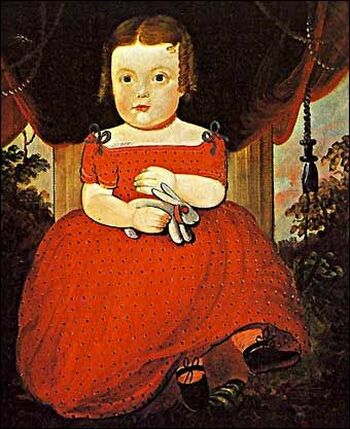 National Gallery of Art, Washington D.C. National Gallery of Art, Washington D.C. The sale of the reward of merit fraktur at Pook and Pook completed by schoolmaster Johann Conrad Gilbert (1734-1812) who emigrated from Germany in 1757 and settled in Montgomery County Pennsylvania may have sparked an interest to our readers as to how the bunny or rabbit became an indelible symbol of Easter in colonial America. As it turns out so many times you must thank the Pennsylvania Dutch for this great contribution to our country. These are the German immigrants like Heinrich Gudehus who emigrated from Palatinate, Germany in the eighteenth century. The concept of the the holiday Easter or the Easter bunny was foreign to Quakers, Episcopalians, Catholics, and Presbyterians. It was shunned in the beginning by these religions. For the children of the Pennsylvania Dutch Easter was a great of a pleasure as Christ Kindle on Christmas Eve. As the cultures assimilated into one larger class of people in the Commonwealth, the numbers of people who celebrated Easter became larger and larger some time after the Civil War. There is evidence of how Easter was viewed in two 1880's newspaper reports: From the West Chester Village Record of March 27, 1883 The custom of of supplying children with colored eggs in Easter day is a growing one here, although it has not been many years since it was almost an unknown feature of the Easter observance in West Chester. The custom is a German one, introduced into this country in its earliest history and ever since then has been steadily growing in favor among all classes in every part of the country until now it can almost be termed a National custom. From the Lancaster Intelligencer of April 10, 1882 In the Presbyterian church there was an avoidance of any celebration of the Easter festival. Phoebe Earle Gibbons wrote in 1882 in Pennsylvania Dutch: I live in the country, but on last Good-Friday was at Reading, and was surprised to see so many persons going to church. Easter is greatly observed by Reformed and Lutherans. It is the time of confirmation and administering the sacrament; and you may hear of churches in country localities having as high as six hundred communicants. At Easter, of course, eggs greatly abound. At a boarding-house at Allentown I heard of colored eggs being offered to callers or taken to friends. Fragments of egg and of colored shells may be seen on the pavements for about a week. A little childish myth is found in these more eastern counties, of which I have heard very little in Lancaster County. It is that the rabbit lays the colored eggs. A young man in Reading says that when they were children they always made a nest the evening before Easter Sunday, of an old hat or something similar, which they set near the door for the rabbit to lay the colored eggs in. An old man in a tavern, however, says that it is foolishness, like Bellschnickel. At my own tavern the landlady was coloring eggs, and had bought some canton-flannel rabbits with which to dress the guests' tables at breakfast on Sunday morning. In Lehigh County a lawyer says that when they were children they would take flax and each make his nest under a bush in the garden. On Easter Sunday morning they would run out and find three eggs of different colors in each nest. Literalness has gone so far in Allentown that I hear of cakes in a baker's window in the form of a rabbit laying eggs. At Easton a lady spoke of making nests for her two boys by taking plates, ornamenting them with cut paper in the form of a nest, putting into each a large candy egg and colored eggs, and placing a rabbit in one and a chicken in the other, and hiding them for the boys to find. This myth of the rabbits' eggs is very common among the Moravians. One of my "Dutch" acquaintances, born west of us in Cumberland County, and afterward living in Maryland, says that her mother told them when children to set their bonnets at Easter for nests for the rabbits' eggs. This is an old German myth. A gentleman from Switzerland says that he heard the fable there, and he thinks that it prevails all over Germany. Many or most of our early German emigrants into Pennsylvania seem to have come from or through the Palatinate. My friend before mentioned, who was born there, thus describes the custom at her former home. If the children have no garden, they make nests in the wood-shed, barn, or house. They gather colored flowers for the rabbit to eat, that it may lay colored eggs. If there be a garden, the eggs are hidden singly in the green grass, box-wood, or elsewhere. On Easter Sunday morning they whistle for the rabbit, and the children imagine that they see him jump the fence. After church, on Easter Sunday morning, they hunt the eggs, and in the afternoon the boys go out in the meadows and crack eggs or play with them like marbles. Or sometimes children are invited to a neighbor's to hunt eggs. Prof. Wackernagel, of Allentown, has kindly pointed out to me the antiquity of the myth. The old German goddess of spring was called Ostara (whence Easter). She rode over the fields in the spring in a wagon drawn by hares. (Our Pennsylvania rabbit is really a hare, as it does not burrow in the ground.) The egg is an emblem, says the professor, of the resurrection from the dead; so herein he finds heathenism and Christianity blended. However, the author of Das Festliche Yahr (Leipsic, 1863) considers the myth older than Christianity; for he says that in Thuringia, Hesse, Suabia, and Switzerland it is said now, as apparently in ante-Christian tjmes, that the hare or Easter hare lays the eggs. Finally, one of my German friends finds the whole a myth of the renewal of life in the spring. Children from the earliest settlement in Germantown in the 1680's were always told to prepare a nest for the Oschter Haws (Easter rabbit). The nests were sometimes built in the house in a secluded spot. Other times they were built in the barn or out in the countryside. Sometimes the boys would use their woolen caps or hats and girls would use their bonnets as a nest for the Easter rabbit to lay the eggs. They were taught that that Easter rabbit always lays the eggs and during the course of Easter Eve if they were good boys and girls, beautiful colored eggs would appear in the nest that was prepared. If the children were bad prior to Easter Eve, one author said the parents of the misbehaved children would tell them that the nest would be filled with rabbit pellets. The same author also was told that parents in York County actually placed geils-gnoddla or horse dung in their children's nests because their children set their hats and bonnets out more than once during the year. By the early the decades of the twentieth century, the Easter rabbit theme spread into all parts of Pennsylvania Another custom, another holiday which began in the Dutch Country of Pennsylvania and eventually spread to the fabric of the nation. How to customize your own rum. Pictured above are several different infusions made from our Yorktown Silver Rum. From left to right: Coconut vanilla rum. blackberry rum, blueberry rum and honeysuckle rum. The bottles hold about 3 to 4 oz's and are just used and cleaned spice bottles. I prefer glass but plastic can be used. The blackberries were picked fresh and lightly bruised before adding the rum on top. The blueberries came from the store and were not bruised prior to adding the rum which is why the rum is clear. The coconut came from the store and cracked fresh the I added vanilla extract in with the rum. Just a light amount as you do not want to overpower the rum or the coconut. The honeysuckle was picked fresh and and rum poured over the top.
You just need to let these sit for about 3 days. Then they are ready for your entertainment. One great idea is to add these over vanilla ice cream. Pick out the berries or coconut and put some into a bowl along with the ice cream and also add about half an ounce of the rum to the ice cream. Once you start experimenting with these types of infusions, you can't stop. You will want to make more and more. The other option is to make yourself a great sipping drink. Our rum is already fantastic. Customizing it is just lot's of fun. Let us hear some of your ideas and maybe we can get them up here on the site for everyone to try. Question? Is there a certain amount I should use when making my own infusions? Answer: No, it's up to you and what you think would be good. What one person likes isn't necessarily going to be what another person likes. Question: Do the fruits need to be fresh picked? Answer: Again, it's a matter of personal taste. Frozen fruit can be used as easily as fresh. Question: How long will my infused fruit last in a jar? Answer: Rule of thumb is no longer than 6 months on the fruit left in a jar. I would take the actual fruit out after a few weeks and use it, but the infused rum will last as long as years to come. It won't get any better with age in any bottle. But it is fun just knowing you always have a special treat around when you want it. 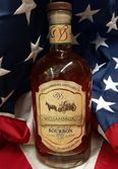 When it comes to selfless acts of love, men have faced unwavering pressure from countless industries. Greeting card makers, chocolatiers, jewelers, and florists have banded together to apply agonizing, often insurmountable stressors upon men in love, particularly during the month of February. Trends like this have persisted for as long as any of us can recall, but a small group of men (and women) in Williamsburg, Virginia are determined to flip the script once and for all and make the tradition of Valentine’s Day being only women a thing of the past by bringing equal rights for men! This Valentine’s Day, the micro-craftsmen of Williamsburg Distillery are throwing their metaphorical three-cornered hats into the ring. They’re calling out the biases of age-old courting customs and proposing a simple alternative with the same impassioned flair you’d expect from traditional Valentine’s Day capitalists. This February, there will be a special tasting of Williamsburg Distillery’s first Bourbon. You can purchase your tickets in shop, both online and in store. According to distillery owner Dr. Bill Dodson, his team’s new approach to selecting gifts of love is not so unconventional because it can be backed by simple science. He explains, “Recent advances in analytical chemistry have finally opened the door to understanding the very small chemicals that make up taste in what we eat and drink.” “As it turns out, the organic compounds that lead us to appreciate a fragrant flower are not so different from those that might cause someone to be allured by the primal bouquet of a barrel-aged alcohol.” Dr. Dodson continues, “The flavors we prize in these beverages are the exact same chemicals that give roses, daisies, pineapples, and apricots their aromatic bouquets.” The fragrant compounds produced in beverage fermentation are referred to as esters or florals. So, why should men be afraid to say they like florals? Naturally, the argument is that both flowers and adequately aged alcohols, such as bourbons and rums, should be appreciated equally, especially on a day like Valentine’s Day. But why only think of February? Dr. Dodson frequently stops to smell the roses in life. Bourbons, Scotch, and Dunder-style Rums are high on his list of the most desirable florals. In this season of love, if you want to surprise your special man (or woman) by pairing florals with something other than chocolates, try a decadent cocktail with one of our fragrant liquors. To join this year’s Valentine’s Day revolution and learn more about Williamsburg Distillery’s 18th Century-inspired gin and organic rum, visit www.williamsburg-distillery.com. |
Archives
January 2022
Categories |
Proudly powered by Weebly

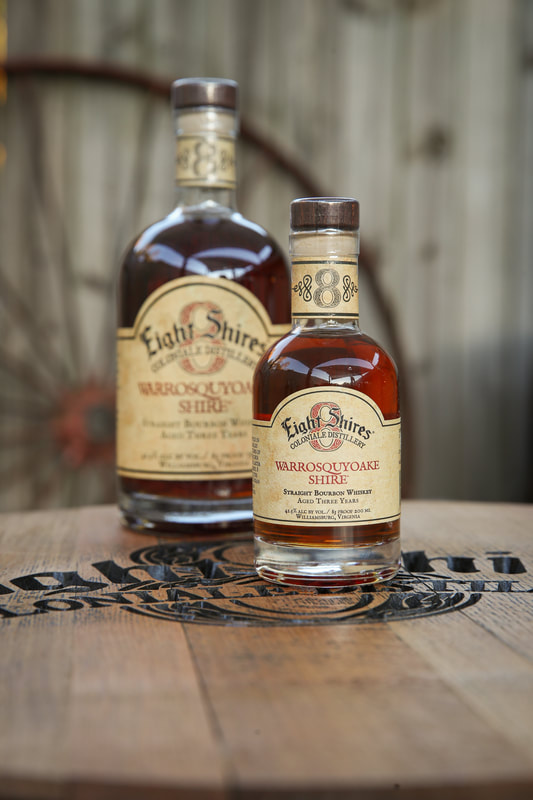
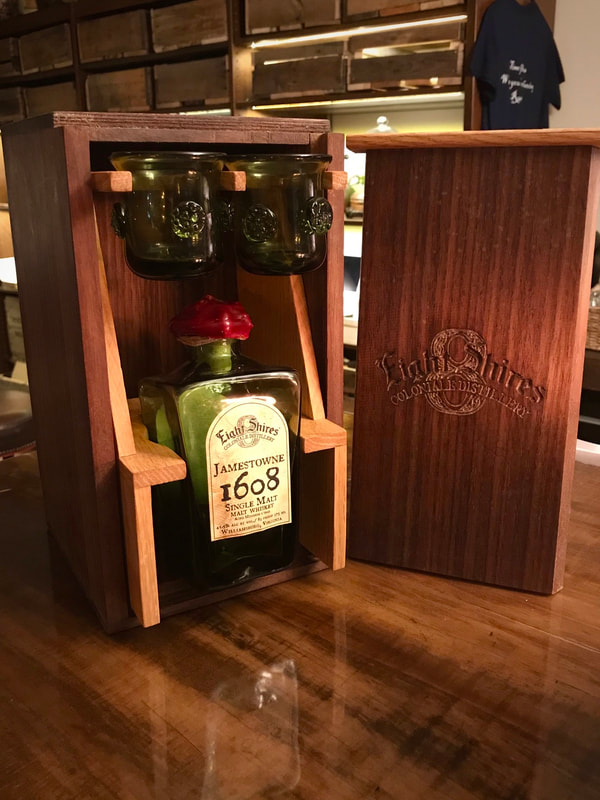
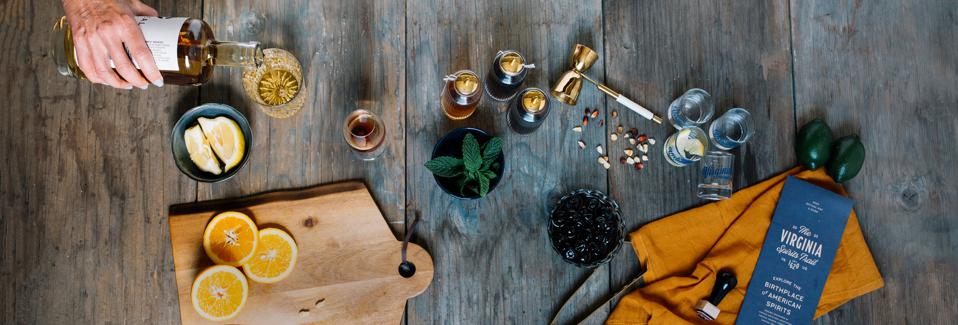

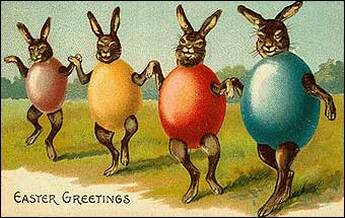
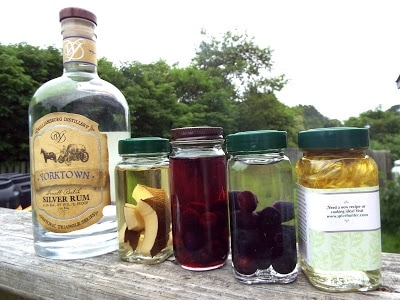
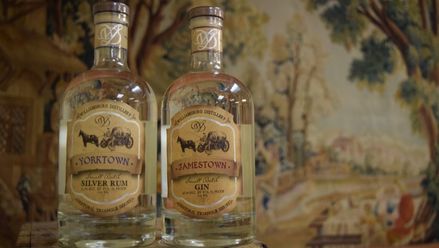
 RSS Feed
RSS Feed